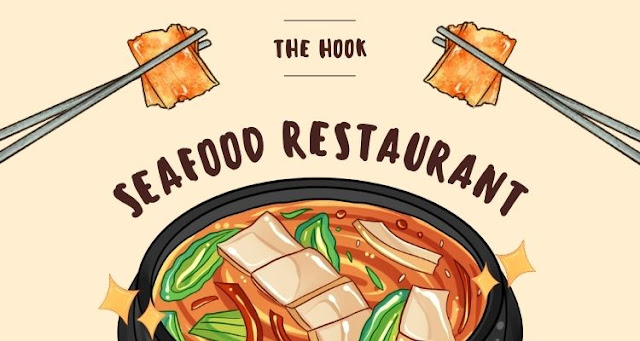A Short Guide To A Seafood Restaurant
A seafood restaurant is a type of eatery that offers dishes made from fish and shellfish. These restaurants range from casual to high-end and cater to a variety of types of customers.
The quality of the food is the
first priority when it comes to seafood restaurants. They should use fresh
ingredients and great recipes to come up with a good dish.
1.
What is a seafood restaurant?
A seafood restaurant is a type
of restaurant that specializes in dishes that include fish or shellfish. The
menu may also contain non-seafood items, such as chicken and beef.
The seafood restaurant is a popular dining
destination in Lower Hutt, New Zealand. They must be upscale, family-friendly
or casual eateries. The best seafood restaurants are known for their quality
food and service.
A good seafood restaurant
should offer a variety of fish and shellfish selections, including the freshest
possible product and an array of sides. A comprehensive fish selection will
help you differentiate yourself from your competition and build customer
loyalty. The restaurant also should have a clean and organized kitchen and
dining area. The staff should also be well-trained and courteous, especially
during rush periods. The restaurant should also have a solid marketing plan to
attract new customers and encourage repeat business. The best seafood
restaurants will also feature a range of beverage options, including wines and
spirits.
2.
What are the objectives of a seafood restaurant?
A seafood restaurant focuses
on serving customers with high-quality food products. They rely on loyal
customers to grow their business and reinvest profits in expanding their
product lines.
They also try to keep their
overhead costs low by limiting maintenance and repair expenses. To increase
foot traffic, they run promotions and discounts on menu items.
In addition, they focus on
establishing relationships with local fisheries and creating menus that reflect
diverse global cuisines. They typically offer "wave-to-table"
selections that change with the day's catch.
Sustainable fishing practices
are a top priority among diners, who are increasingly concerned about the
impact of overfishing and other practices that can threaten the sustainability
of wild species. These practices require that the fish be harvested in a way
that is renewable and cannot jeopardize its ecosystem or future population.
Seafood restaurants often use
fresh fish, which should be firm and have shiny skin. The quality of the fish
should be monitored by owners and managers to ensure that it meets
expectations. Health
benefits of seafood are immense.
3.
What are the challenges of a seafood restaurant?
The most significant challenge
of a seafood restaurant is to maintain the quality and freshness of its
products. Food quality is often determined by suppliers, so it is important for
restaurants to choose them carefully.
Another challenge is that
seafood is highly perishable and requires special handling and refrigerated
storage. This is especially true for fin fish like tuna and oysters, which
should be tightly wrapped to prevent them from oxidizing.
Finally, the availability of
seafood is constantly shifting, so a restaurant must be knowledgeable about its
sources and be able to provide customers with detailed sourcing information.
This information includes how
the fish was caught and whether it was farmed sustainably. It also means
tracking the product throughout its lifecycle, which is a challenging task.
4.
How do you start a seafood restaurant?
Starting a seafood restaurant
can be a fun and rewarding venture. However, it also requires careful planning
and effort.
Start by defining your
concept, focusing on a specific type of seafood or market. This will help you
set your restaurant apart from the competition and attract a loyal customer
base.
Another step is to determine
your location. Seafood restaurants do well when located near water including
oceans, rivers and lakes. They also do better in pedestrian-heavy areas and
near attractions or amusement parks.




Comments
Post a Comment